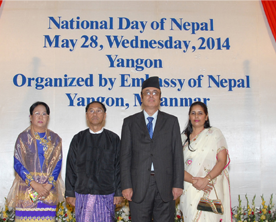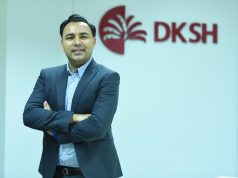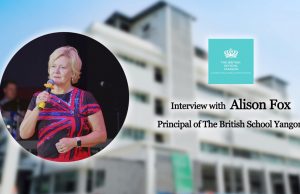Name: Paras Ghimire
Age: 57
Country: Nepal
Job Title: Ambassador
Profession: Government Insider
[paypal]
MI: What is your mission?
Our mission here comprises in; a) Promot-ing and expanding tourism between Nepal and Myanmar b) Developing and expanding bilateral trade relations between us and c) Promoting cultural diplomacy on a sustain-able basis. It is little wonder that our task is also directed towards the exchange of high level visits ranging from top political level to government- bureaucratic level to business between Nepal and Myanmar.
MI : What is the function of the Nepal-ese Embassy in Myanmar and
The function of the Embassy is first of all to strengthen and forge a cordial and sus-tainable relationship with the government of Myanmar down to its various echelons including the private sector, the ubiquitous NGOs and the wonderful people here at large. It is also to build up and promote an endur-ing relationship with the international com-munity in Myanmar including the friendly diplomatic missions, UN functional agen-cies, other international agencies, INGOs etc. Needless to say, we have close relations with Nepalese compatriots here in Myanmar and also the friendly people of Nepalese origin.
MI: How would you describe the rela-tionship between both countries?
We enjoy friendly and cordial relations marked by the warmth of friendship, mu-tual trust, goodwill and understanding and, above all, a sober appreciation of each other’s hopes and aspirations.
MI: Tell us about something that sur-prised you, if any, when you first began your assignment in Myanmar?
Less than two years ago, when I started here, the first thing that struck me was the clean and pollution-free environment of the city, far less vehicular pollution and peaceful atmospherics in terms of sit-ins-dharnas [ a fast undertaken at the door of an offender], bundh [ general strikes], shutdowns, strikes and lock-outs etc. This is by and large, on of the most promising features of a progressive society.
MI: A common factor that unities both countries is their shared Bud-dhist heritage?
Lord Guatam Buddha, the Universal Light of Asia was born in Nepal and Myanmar is a predominately Buddhist country. Nepal is a peaceful country and its unassuming and hospitable people bear many striking resem-blances to the people of Myanmar.
MI: Agriculture is a key economic ac-tivity in Nepal, how do you see the ag-ricultural market develop in Myanmar in terms of technology and training?
Nepal is an agricultural country and in a rap-idly changing world marked by knowledge society and sweeping information technol-ogy, economic liberalisation and privatisa-tion have worked wonders, and Myanmar won’t be the exception. Myanmar was once the leading rice producer in the world and is now working to regain that position. Similar-ly, agricultural products like timber, lentil, beans and fruit have good prospects. I’m en-couraged by the success on these fronts. But it’s not time to rest on laurels and there are many miles to go. It’s an acknowledged fact that there is tremendous agricultural market potential here which will be assisted with political, economic and all-encompassing reforms that are taking place in Myanmar.
This wonderland has turned corners during a brief span of time and is set for a turn-around given the good will of the interna-tional community, international investors, the United Nations and so on. With state-of-the-art technology and the cutting edge of knowledge and development that Myanmar has been attracting in its much-acclaimed reform drive, Myanmar is poised for a major leap and breakthrough in due course which will take in all facets of development and modernization.
MI: Nepal being a mountainous country relies on Hydro power and energy. What are the common fea-tures shared with Myanmar given it’s a major source of capturing energy here also?
Nepal is in the Himalayas and we live in the lap of Mount Everest, the highest peak in the world, which is endowed with majestic beau-ty and the range is a repository of tremendous hydro-potential. Regrettably, we have been able to harness precious little energy which has effectively precluded us from unleashing the forces of the all round development of the country. Nepal and Myanmar share com-mon features as countries of rich natural re-sources, truly presenting nature’s panorama, which has attracted new kinds of visitors. These visitors come to Nepal as tourists, trekkers, mountain climbers and as friends of Nepal. We look at our water recourses pri-marily in the interest of our people; we are willing to share with friendly countries in the region. Its exploitation, establishment of industrial joint ventures, multi purpose de-velopment of our hydro-potential for water navigation, irrigation, drinking water, fish-eries and tourism together with power pro-duction are some of the areas in which there could be meaningful collaboration between our countries extending in co-operation for the larger good.
MI: With regard to tourism, how did Nepal resolve the hotel shortage, transportation and challenges on in-frastructure when it first opened up for mass tourism?
Although, we embarked on planned devel-opment and opened up for the tourism sec-tor much earlier, we have so far been able to attract almost one million visitors and friends to Nepal every year. We still have lots of work to do in this area. While there are good hotels in the capital, collectively they are inadequate to deal with demands of the 21st century. We have been working with development partners to step up transpor-tation needs and necessities. As we are put-ting together our spirited efforst to build a globalised Nepal, we still have challenges to surmount especially outside of the capital city.
MI: How do you see bilateral trade relations between Nepal and Myan-mar?
There exist at this point enormous trade prospects and potentials between Nepal and Myanmar. The visit to Myanmar of the busi-ness delegation from Nepal in early 2013 and the delegation talks with UMFCCI (Union of Myanmar Federation of Chambers of Com-merce and Industry) have opened up vistas for further co-operation and collaboration on a range of issues. At this moment in time, although trade prospects look good and promising, more and more concerted efforts and collaboration on both sides is called for in the best national interests.
MI: What are the potential areas that Nepal and Myanmar could work joint-ly upon?
Tourism, especially religious tourism stands out among the potential areas Nepal and Myanmar could cooperate. A good number of Myanmar nationals visit Lumbini, the birthplace of Lord Buddha each year. Re-grettably and paradoxically as we do have as yet, direct air flights to connect our two na-tions. It remains an inconvenience to move from one country to the other. The specific areas can be singled out when we work to-gether at government level or at the level of the private sector.
MI: Are you satisfied with the cur-rent reform process? Which areas have exceeded your expectations and which have not?
It is quite conceivable that development and reform are long drawn-out processes and also one is reminded of the adage ‘if there are no problems, there are no prospects’. The current sweeping reforms have earned wider appreciation and broader admiration from across the globe. The downsides and downturns of the past decades are on course to being tempered by the reform drive. This in itself is a singular turnaround. The fact remains that change, reform, improvement and progress anywhere in the wider world is a gradual, steady progress and it takes place through evolution. We will do well not to ex-pect too much in the short to medium term. It is, above all, a long haul process with the involvement of one and all, people’s partic-ipation, teamwork and working together in harmony with a common purpose towards national goals and objectives. With regard to the economy, some key segments like gas production services, construction, commodity exports and foreign direct investment have made significant gains, according to the World Bank study. Even as affordable and accessible healthcare services and education programmes are, of late in the top priori- ty list in terms of recourse allocation, these sectors are inextricably linked with people’s lives and focussed attention here is called for here on a regular basis. It is rightly said that ‘health and education are our home and hearths and physical activities, food pens and books are our safety and security’, These are areas that we can hardly be complacent about until we designate them as our ‘priori- ty among priorities’.
MI: From a country development standpoint, what do you see as the big-gest challenges facing the current gov-ernment in the next 1-3 years?
As Myanmar is a resource rich, fast moving, developing country of sixty million with 88 percent of them Buddhist adherents, its di-versity and friendly people are its assets. Resources and opportunities for people must be made effective and efficient, people will be required to be more skilful, trained, en-lightened and informed to cope with the 21st century needs and the challenges of global-isation. Achieving inclusive and sustainable development, with a people-centric approach along with poverty alleviation, infrastructure development including telecom reforms and working with international investors and de-velopment partners will go some way to de-veloping the country. Challenges remain like job creation, an uninterrupted power supply together with accessibility to clean safe and piped water regardless of the remoteness of where one lives..
MI: How do you see Myanmar com-paring with its Asian neighbours in the short and long term future?
As nations can be judged by robust leader-ship, good management skills, honesty and above all effective teamwork; an upcoming, emerging and promising developing coun-try should plan and work to long term per-spectives and not with short term band aid solutions.
MI: Some investors are adopting a wait and see attitude, investors are looking for long term stability af-ter 2015. What are your Excellency’s thoughts on the political stability of Myanmar after 2015?
Now that Myanamar has once and for all put its past to rest and with the introduc-tion of far-reaching and meaningful reform efforts, it is now headed for an inimitable game-changing mission by joining hands with the international community. The na-tion has already stepped up to the plate by the successful hosting of the Myanmar Development Forum, World Economic Fo-rum, Asia congregation and the recent SEA games, BIMSTEC Summit meetings and, of late ASEAN chair ship. The region, under ASEAN, is also bracing up for economic integration, home to 600 million dynamic people; it is all set to inaugurate a common market and manufacturing base. Post 2015, it will be able to work in tandem with its neighbours and the international communi-ty at the global high table. There is no look-ing back for Myanmar in terms of economic development and taking forward the reform process on a sustainable basis. Myanmar will do well in formulating a post 2015 de-velopment agenda and a new road map for the next several years – a sort of perspective planning. Looking ahead into the future, the challenging tasks of development are many and varied. It is becoming abundantly clear that no job at hand is independent and can be considered in isolation of another. Myan-mar will do well to take each task as both national challenge and an international one, galvanising the energetic human resources and its tremendous natural resources for the larger good of its people. The task ahead is not only enormous and acute; it also calls for a creative and imaginative approach. It is not only knowledge and skills that we need to ap-ply but sharing experiences and best practices coupled with the strength to resolve and act earnestly and without let up, will be the need of the hour for a 21st century new Myanmar.[/paypal]










